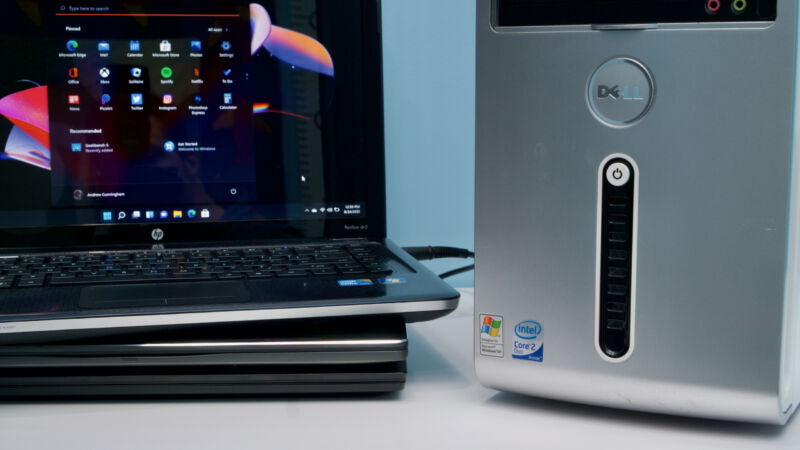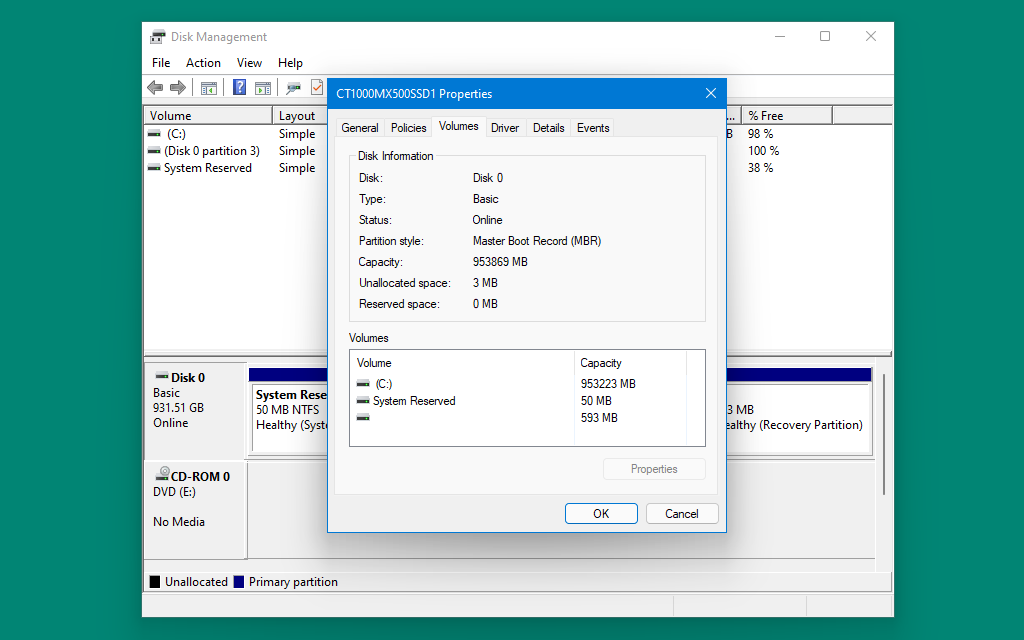How To Activate Windows 10 Pro From Windows 8.1 On Hp Laptop After Clean Install
everything there is to know —
How to upgrade to Windows 11, whether your PC is supported or not
Supported or not, new or onetime, this is everything you lot need to know.

Overstate / You proper name it, we've tried installing Windows eleven on it.
Andrew Cunningham
Windows 11 is here. And now that you've had time to read our full review, you might be thinking virtually installing the upgrade on your ain PC.
We think most people should wait a few months to give Microsoft fourth dimension to iron out Windows 11's biggest new-operating-system bugs and stop releasing updates for Windows' built-in apps. But yous may want to install the operating system anyway because yous desire to examination it or because you similar to run the newest affair. Or maybe you'd similar to install Windows 11 on an "unsupported" PC because Microsoft is not your parent and therefore cannot tell you what to do.
Nosotros've pulled together all kinds of resources to create a comprehensive install guide to upgrading to Windows 11. This includes advice and some stride-by-pace instructions for turning on officially required features like your TPM and Secure Kick, besides equally official and unofficial means to skirt the system-requirement checks on unsupported PCs.
I've had Windows xi running on PCs as onetime every bit a Dell Inspiron 530 from 2008, and while I'grand not saying this is something yous should do, information technology is something that y'all tin can do.
How do I become Windows 11?
The easiest way to get Windows xi is by checking Windows Update on a supported, fully up-to-date Windows x PC. Only because Microsoft is rolling out Windows eleven slowly over the course of many months, your PC may not see information technology however.
Microsoft offers several ways to download Windows 11 manually. 1 is to use the Installation Assistant app, which you install on your PC to trigger a normal upgrade install via Windows Update. The second is to use the Windows 11 Media Cosmos Tool, which automates the process of creating a bootable USB install drive or downloading an install ISO file. In one case yous accept a USB bulldoze, you can either boot from information technology to perform a clean install or run the Setup app from within Windows 10 to exercise a normal upgrade install. You can likewise burn the ISO to a DVD, merely installing from any USB bulldoze, even an quondam USB ii.0 drive, will be much faster, so you shouldn't do that. Finally, you can simply download an ISO file directly from Microsoft's site.
Practice I need to pay for it?
Windows 11 is a costless upgrade to Windows x. So if yous're running Windows 10 Domicile or Pro on your PC, regardless of whether your PC is officially supported or not, you'll exist able to install and activate the equivalent edition of Windows 11.
If you're installing Windows xi on a new PC you lot've just congenital yourself, officially, you should buy a Windows 10 or Windows 11 license. Every bit of this writing, the only sites I meet selling retail editions of Windows 11 are scammy production fundamental websites that I wouldn't trust with my credit carte du jour info, then I would recommend buying a Windows 10 license from a reputable site. Its product key should work to install and activate Windows 11.
Unofficially, I've had some success using erstwhile Windows 7 and Windows viii production keys to activate equivalent editions of Windows eleven—information technology's an open secret that the Windows 10 installer would continue to accept these older product keys long after the "official" free Windows 10 upgrade offer expired back in 2022. But nosotros've besides heard from readers who have had trouble using these keys with Windows eleven or later Windows x releases, then your luck may vary.
What does my PC need to be "supported"?
Permit's reiterate the Windows 11 system requirements:
- A "compatible" 1 GHz or faster dual-core 64-bit processor from Intel, AMD, or Qualcomm
- 4GB of RAM
- 64GB of storage
- UEFI Secure Boot supported and enabled
- A Trusted Platform Module (TPM), version 2.0
- A DirectX 12-compatible GPU with a WDDM ii.0 driver
- A 720p display larger than 9 inches in size
Windows 11 Home requires a Microsoft account and Internet connectivity; Windows 11 Pro can still be used with a local account. Windows ten Dwelling used to allow you create a local account as long as you lot didn't connect to the Internet during setup, but that pull a fast one on no longer works.
The processor requirement is the nearly restrictive; supported processors include 8th-generation and newer Intel Cadre processors equally well as AMD Ryzen 2000-series processors and newer. These are all chips that launched in late 2022 and early on 2022. Older computers tin't officially run Windows 11. This is a large difference from Windows ten, which made a betoken of supporting pretty much anything that could run Windows 7 or Windows 8.
We become more into the reasoning behind these requirements (and whether they hold water) in our review. Merely the three big ones are the CPU requirement, the TPM requirement, and the Secure Kicking requirement.
How tin I tell if my PC is supported?
-
Windows Update can tell you whether your PC is supported, but the PC Wellness Check app will notwithstanding get you the most detailed info.
Andrew Cunningham
-
The version of the message yous'll get if your PC is supported.
Andrew Cunningham
When you open up Windows Update in Windows ten, information technology might tell you whether your PC is supported or not. Simply the easiest way to cheque manually is with Microsoft's PC Health Check app. Early versions of this app weren't very good, only the current version will tell you whether your PC is compatible as well as why it is or isn't compatible.
If y'all aren't using a supported processor, either plan to upgrade to a CPU that is supported or skip ahead to the section where we talk about installing Windows 11 on unsupported PCs.
If your processor is supported simply you don't meet the TPM or Secure Kick requirements, the adept news is that unless something is very wrong with your PC, they should both exist features you tin enable in your PC's BIOS.
How exercise I get into my PC'southward BIOS?
Usually, you tin enter your BIOS by pressing some key later on turning on your PC but before Windows begins to boot. The cardinal varies, just mutual ones include the Delete key, F2 (for Dell systems), F1 (for Lenovo systems), or F10 (for HP systems).
The consistent but more roundabout way of opening your BIOS is to get to the Windows Settings app, then Windows Update, then Recovery, and then Restart At present under "Advanced startup." In the basic blue screen you see adjacent, click Troubleshoot, then Advanced options, then UEFI Firmware Settings.
How do I enable my TPM?
Enabling your processor's born firmware TPM is easy, just finding the setting to practice it sometimes isn't. If y'all're not sure what you're doing, endeavour searching for "[manufacturer of your estimator or motherboard] enable TPM," because many manufacturers have created help pages specifically because of Windows 11.
For Intel systems, if you tin't find a setting marked "TPM" somewhere in the chipset or security settings, look for "Platform Trust Technology" or "PTT" and enable that. AMD systems normally just refer to information technology as an "fTPM," though you may also see information technology called the "Platform Security Processor," or "PSP."
Once yous've enabled your TPM, reboot into Windows and apply the Health Check app to make sure it'south working properly.
How practise I enable Secure Boot?
Any computer made since Windows viii was released in 2022 ought to support Secure Kicking, which helps prevent unsigned and potentially malicious software from being loaded during your PC'due south boot process. You should be able to turn it on in your PC's BIOS if it isn't already enabled, ordinarily either in a "Security" or "Kick" department. As with enabling your TPM, if you lot can't find the setting, check your PC's or motherboard'southward manual.
If your computer won't boot afterward you enable Secure Kick, don't worry—y'all just need to go through a couple of additional steps. Failure to boot is about likely because your hard drive or SSD is set up up with an MBR (or Master Boot Record) partition table rather than the newer GPT (GUID Partition Tabular array) format that Secure Boot and UEFI both require.
To check, correct-click the Start push or use the Windows + X keyboard shortcut and and so click Disk Management in the menu that pops upwards. Right-click any drive that Windows is installed on (in nigh computers, it will be Disk 0, but not e'er if you have multiple difficult drives), so click Properties, so cheque the Volumes tab. If your partition manner is listed every bit MBR, that's when you'll demand to convert the drive.

If your bulldoze uses the older MBR partition manner, you will need to convert it to GPT before you tin can enable Secure Kicking.
Andrew Cunningham
To convert from MBR to GPT in Windows 10:
- Open Settings, then Windows Update, then Recovery, and click "Restart at present" under "Advanced startup."
- When your PC reboots, click the Troubleshoot push button, and then Advanced options, then Command Prompt.
- In the Command Prompt window, type
mbr2gpt /validateto check to make certain the drive can exist converted. Then, typembr2gpt /convertto convert the drive. - When it'due south finished, re-enable Secure Boot in your BIOS, and your PC should kick normally.
If this conversion fails for some reason, the easiest option may be to do a clean reinstall of Windows 10 or xi with Secure Boot enabled. When you format the bulldoze and install Windows from a bootable USB stick, it will use GPT instead of MBR.
Source: https://arstechnica.com/gadgets/2021/10/how-to-upgrade-to-windows-11-whether-your-pc-is-supported-or-not/
Posted by: shannontherfull00.blogspot.com


0 Response to "How To Activate Windows 10 Pro From Windows 8.1 On Hp Laptop After Clean Install"
Post a Comment